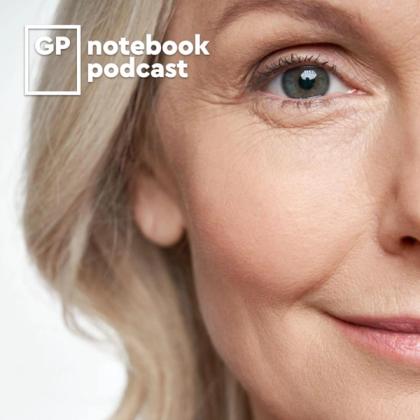This podcast episode is worth 0.34 CPD credits. Upgrade to Pro
Ep 76 – Passing the test of testosterone replacement: menopause and hormone replacement therapy (part 2)

Posted 27 Jul 2023
Dr James Waldron, Sam Dobson
In this follow-up to episode 52, Dr James Waldron and Mr Sam Dobson (Consultant Gynaecologist, Sub-specialist in Reproductive Medicine and BMS-accredited Menopause Specialist) consider the impact of menopause on libido. They talk through the physical and psychological features of menopause that can lead to a reduction in libido, the conversations and initial investigations in primary care, and consider available options for the management of menopause-related loss of libido, including topical and systemic hormone replacement therapy (HRT) and testosterone.
Key references:
Key take-home points:
- In women, testosterone is made in the ovaries and the adrenal glands. During menopause, testosterone production by the ovaries ceases which can lower libido.
- Patients may be reluctant to discuss loss of libido during consultations regarding menopause. A global approach is recommended, i.e., explore other factors that may be impacting libido, and which may be addressed, such as vaginal dryness/soreness and systemic symptoms (hot flushes, insomnia, anxiety etc), that may be reducing the desire to have sex.
- If a patient is receiving HRT either as a patch or systemically but is still experiencing urogenital symptoms, consider prescribing vaginal HRT such as Vagifem or oestrogen cream that can be safely added to any systemic regimen.
- Oestrogen cream should be used every day for the first two weeks, then once or twice per week as maintenance for 6 months to a year (or longer if there is a benefit).
- If a patient is receiving conventional HRT but still has loss of libido, consider testosterone.
- Testosterone is not a licenced treatment for menopause in the UK. Patients should be counselled that long-term safety data is minimal and that side effects may occur. Common side effects include black hair growth, acne and weight gain. More serious side effects that may not be reversible include alopecia, deepening of the voice and clitoral enlargement.
- Take a baseline total testosterone measurement to ensure levels are low before starting treatment. Review the patient after 2–3 months to check that testosterone levels are higher than baseline but still within the normal female range to avoid side effects.
- Patients should stop treatment if they experience side effects. Likewise, they should cease treatment if there is no improvement in libido at six months.
- Testosterone is available in several formulations: Testogel is available as a sachet (40–50 mg). Patients should apply an eighth of a sachet to clean, dry skin daily (changing the skin area each day); Testim (1% gel) – 1/10 of a tube to be used daily; Tostran (2% solution in a canister) – one pump to be used on alternate days.
Create an account to add page annotations
Annotations allow you to add information to this page that would be handy to have on hand during a consultation. E.g. a website or number. This information will always show when you visit this page.